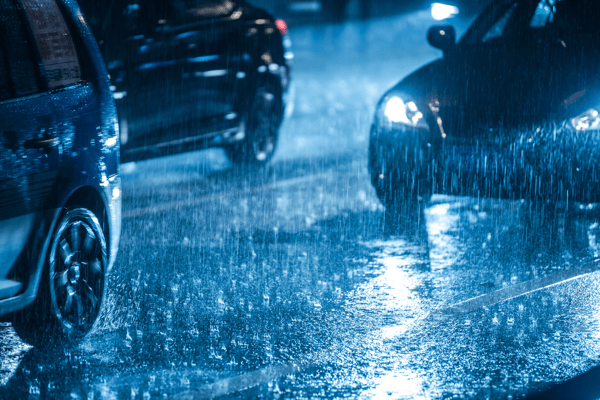- Insurance
- Auto, Home & Personal Insurance
- Business Insurance
- Business Interruption Insurance
- Business Owners Package Insurance
- Commercial Auto Insurance
- Commercial Property Insurance
- Commercial Umbrella Insurance
- General Liability Insurance
- Hotel & Motel Hospitality Insurance
- Professional Liability (E&O) Insurance
- Surety Bonds
- Workers' Compensation Insurance
- - View All Business
- Life Insurance
- About
- Policy Service
- Contact
Article originally posted on www.insuranceneighbor.com(opens in new tab)

The arrival of spring means a long break from icy, snow-packed roads and winter driving conditions. Although snow and ice may not be a problem during the warmer months, inclement weather can still cause hazardous driving conditions. High winds and heavy rains are common in the spring, and peak tornado season is during the spring and summer.
Weather Hazards In The Spring and Summer
During the warmer months, drivers may encounter a variety of hazardous conditions related to inclement weather, including:
- Lightning: Thunder and lightning come with summer storms. Lightning can cause fires and knock down power lines. It can also cause temporary blindness when it strikes near you, particularly at night.
- Flash floods: With a rapid rise of water in a short amount of time, flash floods are one of the great dangers associated with thunderstorms.
- High winds: During a severe storm, the wind may be strong enough to jerk your car out of its proper lane or even off the road. The wind may also toss tree branches or cause other flying debris to hit your car or fall in its path.
- Low traction: Rain on the road can cause your car to have very low traction during a storm. This means more time required to brake and less control over your vehicle.
- Poor visibility: Rain pouring down all around you makes it difficult to see when you are driving during a storm. Even with defrosters on and windshield wipers working at full speed, driving visibility will be poor.
- Hail: Spring is the time of year when hail is most frequent. If you happen to be out driving when a hailstorm hits, it can cause serious damage to your vehicle.
- Other drivers: When a storm hits and you slow down to a speed that is safe for conditions, some drivers may become impatient, tailgating, speeding, or passing unsafely. Other drivers may be become nervous and drive too slowly or erratically, contributing to traffic congestion. Either type of driving behavior can cause accidents.
Tips For Safe Driving In Hazardous Weather Conditions
If you are caught in a spring or summer storm, the following tips can help you and your passengers stay safe:
- Turn your lights on: Visibility is low during a storm. Turning your lights on lets other drivers see you.
- Do not tailgate: Leave plenty of room between your car and the vehicle in front of you.
- Avoid bridges: They are more likely to collapse during a severe thunderstorm or tornado. If you have to go over a bridge, wait for the storm to pass.
- Do not try to outrun a tornado: Their paths are unpredictable and can switch directions at any time. Pull over to the side of the road and seek shelter, either in the lowest level of a nearby building or at the lowest point of the ground, lying down, and covering your head with your hands. Do not take shelter under a vehicle, in a tunnel, or under a bridge.
- Check your auto insurance coverage: Our experienced agency can help you find the car insurance you need at the best available rates.
